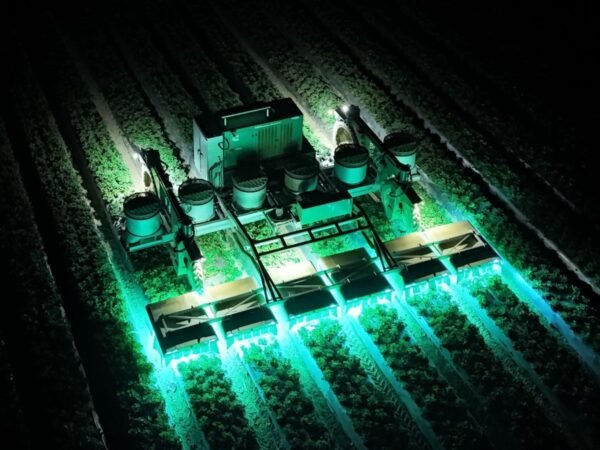Quick Takeaways
-
Strawberries’ Pesticide Issue: Strawberries dominate the U.S. berry market but are heavily reliant on pesticides, consistently ranking high on the Environmental Working Group’s "Dirty Dozen" list for contamination.
-
TRIC Robotics’ Innovative Solution: San Luis Obispo-based TRIC Robotics leverages UV-C light and robotic technology to help strawberry farmers reduce chemical usage, treating up to 100 acres autonomously.
-
Service Model Adoption: Unlike traditional sales, TRIC operates as a service replacing conventional pest control methods, allowing for easier scalability and genuine farmer collaboration.
- Growth Potential & Future Plans: Following a $5.5 million seed funding round, TRIC is set to expand its fleet and explore applications for other crops, signaling a promising future for ag-tech advancements.
Revolutionizing Strawberry Farming
Strawberries dominate U.S. berry consumption, yet they come with a downside. They frequently occupy the top spots on the Environmental Working Group’s “Dirty Dozen” list, indicating heavy pesticide reliance. However, TRIC Robotics offers a promising alternative. Based in San Luis Obispo, California, the startup deploys autonomous robots that utilize UV-C light. This innovative form of ultraviolet light effectively targets bacteria and pest populations while significantly reducing chemical usage.
TRIC’s robots can cover up to 100 acres and incorporate vacuums to collect bug residue without damaging the crops. By operating overnight, these robots provide strawberry farmers with a service that replaces traditional pest control methods. Adam Stager, the co-founder and CEO of TRIC, highlights their collaborative approach with farmers to align the technology with actual needs. This strategy not only simplifies pesticide reduction but also facilitates a smoother transition to safer agricultural practices.
A Sustainable Approach to Agriculture
The shift from conventional to sustainable farming is critical for both health and environmental reasons. TRIC Robotics exemplifies how technology can contribute to this transition. Initially focused on other areas, Stager pivoted to agriculture after recognizing its potential for widespread impact. By connecting with the U.S. Department of Agriculture, TRIC tapped into existing UV technology to enhance strawberry farming.
With recent funding of $5.5 million, TRIC aims to expand its fleet and eventually extend its services to other crops. This scalability represents a significant step toward larger implications for sustainable agriculture. In a world concerned with food safety and environmental impact, TRIC Robotics stands at the forefront of a transformative journey, emphasizing the need for innovative solutions in agriculture. As awareness grows, the potential for wider adoption of such technologies could pave the way for a healthier future.
Continue Your Tech Journey
Learn how the Internet of Things (IoT) is transforming everyday life.
Discover archived knowledge and digital history on the Internet Archive.
TechV1

